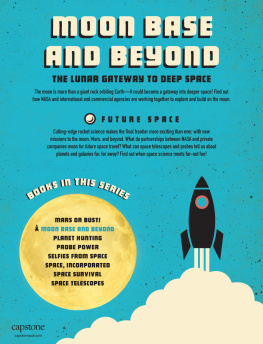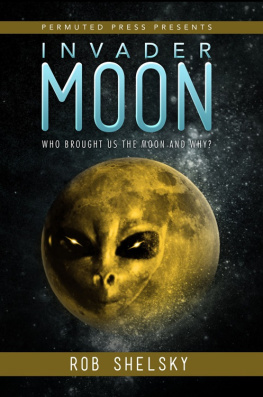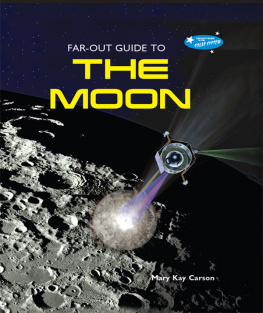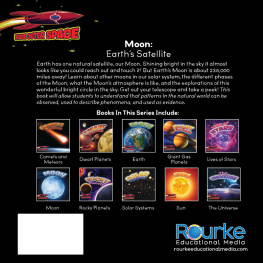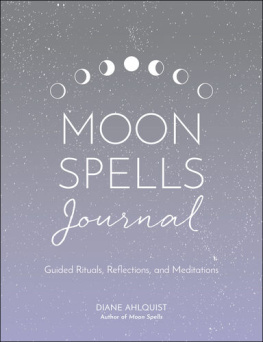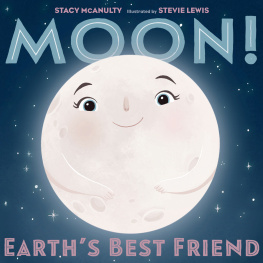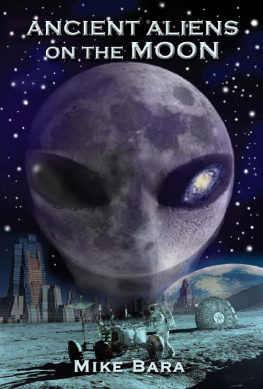
The Secret Influence
of the
MOON

This is a book that I have been waiting to read. For untold centuries the great orb in the sky has been causing large numbers of our species to become transformed into lovers, looters, or lunatics. In addition to providing interesting scientific data about the Moon, Proud also explores the many occult and esoteric traditions that have grown up around Moon lore and traces our satellites influences on psychic seers, sensitives, oracles, and prophets.
BRAD STEIGER, AUTHOR OF REAL ENCOUNTERS, DIFFERENT DIMENSIONS, AND OTHERWORLDLY BEINGS
Louis Prouds The Secret Influence of the Moon is intriguing and most enjoyable. It is the kind of thing that sparks the imagination and the sense of wonder.
JOHN SHIRLEY, AUTHOR OF GURDJIEFF: AN INTRODUCTION TO HIS LIFE AND IDEAS
Louis Proud takes us on a fascinating journey of the Moons mysteries in ancient lore and what we may actually have found there. As one who has long suspected that not only did we go but also that we may have found something that caused a tight lid of security to be clamped down, I recommend this book as a valuable addition to the library of anyone interested in space anomalies.
JOSEPH P. FARRELL, PH.D., AUTHOR OF FINANCIAL VIPERS OF VENICE AND COVERT WARS AND BREAKAWAY CIVILIZATIONS
ACKNOWLEDGMENTS
Id like to thank everyone who encouraged and supported me, either directly or indirectly, with the writing and publication of this book. Those Id like to thank especially are:
The staff at Inner Traditions, in particular Jon Graham, for deciding this project was worthy of publication, as well as my courteous project editor Chanc VanWinkle Orzell; my dear wife, Tseada Zekarias, for coping with the challenges that come from being married to an author of weird books; Geoff Henshall, for providing me with part-time employment while I wrote the first half of the book; Tess Warrener, also for providing me with employment; my parents Suellen Fuller and Phillip Proud (19472010); John Shirley; William Patrick Patterson; Nick Redfern; Brad Steiger; Farouk El-Baz; Clive R. Neal; Joseph P. Farrell; Mike Bara; Jason Horsley (aka Aeolus Kephas); David and Robert of New Dawn magazine; Rich Lilly; G. Jeffrey Taylor; Duncan Roads; Paul McLean; Neil Hague; Linda Atherton; Patrick Huyghe; and last but not least the man in the Moon.
INTRODUCTION
There is something haunting in the light of the Moon; it has all the dispassionateness of a disembodied soul, and something of its inconceivable mystery.
JOSEPH CONRAD
Even though it isnt always visible, the Moon consistently appears in the sky, orbiting the Earth as it has done for billions of years. If you go outside tonight and gaze up at the heavens, youre likely to see it. Its glowing presence, both beautiful and haunting, has fascinated and inspired humankind since the very earliest times.
Most of us occasionally glance at the Moon, but few of uswith the exception of astrologers and astronomers, perhapsactually pay it considerable attention. This is not surprising, since weve been led to believe the Moon is little more than a cold, dead rock that orbits the Eartha pretty object, but one deserving of little excitement.
The Moon has been orbited and photographed by satellites, visited by probes, and walked oneven driven onby astronauts. Its entire surface has been mapped, so were told. It has, in the physical sense at least, been quite extensively explored. It has now been about forty years since Apollo 17 made its journey to the Moon and returned. Completed in December 1972, it remains the last manned mission of its kind and the last time human feet (wearing boots!) made contact with lunar soil.
Why hasnt the Moon been colonized, you ask? Where are the lunar bases? And why havent scientific instruments, telescopes especially, been placed on the Moons surface? The far side of the Moonthe side turned away from Earthis completely devoid of radio interference, making it an ideal location for a radio telescope. Yet, no such facility exists. All is quiet on the Moon. Or is it?
What was discovered on the Moon that has kept humans away for so long? A hostile alien presence, perhaps?
The journey on which you are about to embark is, in part, a personal one. It begins in my childhood. Like all curious children, I was fascinated by the Moonthe largest, brightest, and most impressive object in the night sky. I kept a close eye on the Moon, as I do today, paying particular attention to its current phase. I remember being affected in an obvious way by the occurrence of a full moon; I would become twitchy, angry, and hyperactive, as would my brothers and sisters. That the full moon influences human (and animal) behavior, augmenting our irrational tendencies, is a persistent belief that deserves to be investigated. We will attempt to get to the bottom of this later.
At the age of five I began to think of the Moon as an artificial and inhabited objecta huge, cavern-filled nest constructed by giant insects. Like all children, I was intrigued by insects and their dwellings. Of particular interest to me were the wasps nests that appeared frequently on the ceiling of my fathers shed. The most common of which were the urn-shaped ones made from gray-colored clay. I asked myself, Could the Moon have been constructed by wasplike creatures? The idea was not an implausible one.
I remember describing my insect moon theory to one of my teachers in primary school. She found it cute and amusing but, to my great disappointment, failed to take it seriously. The Moon, she tenderly explained, formed as a result of complex scientific processes, and had nothing to do with insects, giant or otherwise. Despite this, I remained convinced that the Moon was not what it seemed; it was simply too strange and artificial looking to have been built solely by Natures hand.
I still have in my possession a story I wrote in my early childhood that reflects how I feel about the Moon to this day. Consisting of just one sentence, it reads: Once there was an astronaut that [sic] hit the Moon and cracked the Moon. The story (if it deserves to be called one) includes a drawing of the Moon with a prominent crack down its side with an astronaut on a flying chair adjacent to it.
For a celestial object such as the Moon to be cracked, it would have to be hollow. In order to be hollow, it would have to be artificial. To quote the late Carl Sagan in relation to the moons of Mars, a natural satellite cannot be a hollow object. What makes my story unusual is I dont remember hearing about any alternative theories regarding the Moon. How, then, did the idea of an artificial Moon form in my mind?
Believe it or not, the idea of a hollow, artificial Moon is not as farfetched as it seems; there is plenty of evidence to indicate that such is indeed the case. Even the insect moon theory of my childhood is not without some meritespecially if you consider how little knowledge science provides for the Moons origin. Todays leading theory of lunar origin, known as the big whack (or giant impact) hypothesis, is accurately described by Christopher Knight and Alan Butler in their book Who Built the Moon? as containing more holes than a rusty colander. We will explore this topic later.
I wish to make it clear to the reader that although this book is replete with scientific information, it is by no means a conventional scientific book. A more suitable classification, perhaps, would be parascientific
Next page

